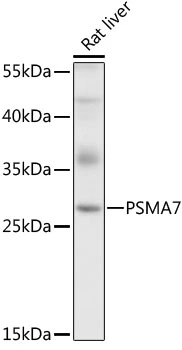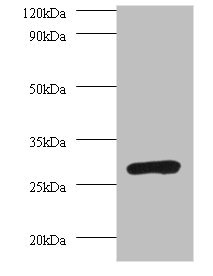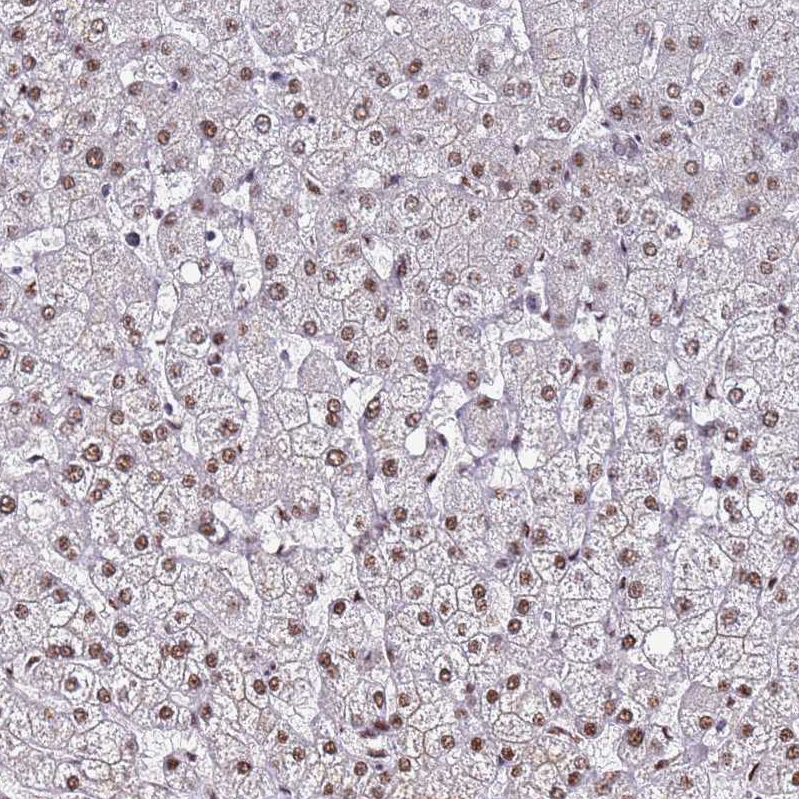PSMA7 antibody [N1C2]
GTX113531
ApplicationsWestern Blot, ImmunoHistoChemistry, ImmunoHistoChemistry Paraffin
Product group Antibodies
TargetPSMA7
Overview
- SupplierGeneTex
- Product NamePSMA7 antibody [N1C2]
- Delivery Days Customer9
- Application Supplier NoteWB: 1:500-1:3000. IHC-P: 1:100-1:1000. *Optimal dilutions/concentrations should be determined by the researcher.Not tested in other applications.
- ApplicationsWestern Blot, ImmunoHistoChemistry, ImmunoHistoChemistry Paraffin
- CertificationResearch Use Only
- ClonalityPolyclonal
- Concentration0.86 mg/ml
- ConjugateUnconjugated
- Gene ID5688
- Target namePSMA7
- Target descriptionproteasome 20S subunit alpha 7
- Target synonymsC6; epididymis secretory protein Li 276; HEL-S-276; HSPC; proteasome (prosome, macropain) subunit, alpha type, 7; proteasome subunit alpha 4; proteasome subunit alpha 7; proteasome subunit alpha type-7; proteasome subunit RC6-1; proteasome subunit XAPC7; RC6-1; testicular tissue protein Li 151; XAPC7
- HostRabbit
- IsotypeIgG
- Protein IDO14818
- Protein NameProteasome subunit alpha type-7
- Scientific DescriptionThe proteasome is a multicatalytic proteinase complex with a highly ordered ring-shaped 20S core structure. The core structure is composed of 4 rings of 28 non-identical subunits; 2 rings are composed of 7 alpha subunits and 2 rings are composed of 7 beta subunits. Proteasomes are distributed throughout eukaryotic cells at a high concentration and cleave peptides in an ATP/ubiquitin-dependent process in a non-lysosomal pathway. An essential function of a modified proteasome, the immunoproteasome, is the processing of class I MHC peptides. This gene encodes a member of the peptidase T1A family, that is a 20S core alpha subunit. This particular subunit has been shown to interact specifically with the hepatitis B virus X protein, a protein critical to viral replication. In addition, this subunit is involved in regulating hepatitis virus C internal ribosome entry site (IRES) activity, an activity essential for viral replication. This core alpha subunit is also involved in regulating the hypoxia-inducible factor-1alpha, a transcription factor important for cellular responses to oxygen tension. Multiple isoforms of this subunit arising from alternative splicing may exist but alternative transcripts for only two isoforms have been defined. A pseudogene has been identified on chromosome 9. [provided by RefSeq]
- Storage Instruction-20°C or -80°C,2°C to 8°C
- UNSPSC12352203



![FACS analysis of Jurkat cells using GTX83785 PSMA7 antibody [8F9]. Red : Primary antibody Blue : Negative control antibody](https://www.genetex.com/upload/website/prouct_img/normal/GTX83785/GTX83785_182_FACS_w_23061420_168.webp)


![WB analysis of HEK293T cells transfected with PSMA7 plasmid (Right) or empty vector (Left) for 48 hrs using GTX83786 PSMA7 antibody [2A7]. Loading : 5 ug per lane](https://www.genetex.com/upload/website/prouct_img/normal/GTX83786/GTX83786_3906_WB_w_23061420_996.webp)